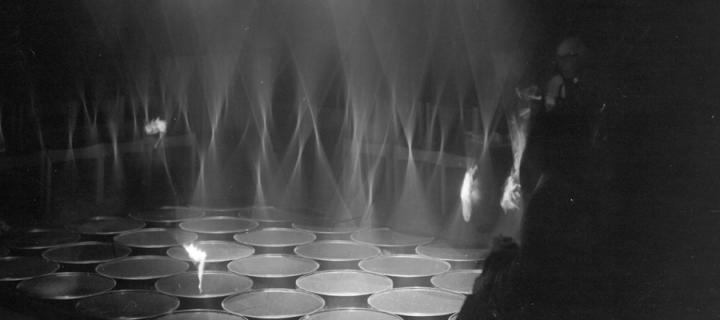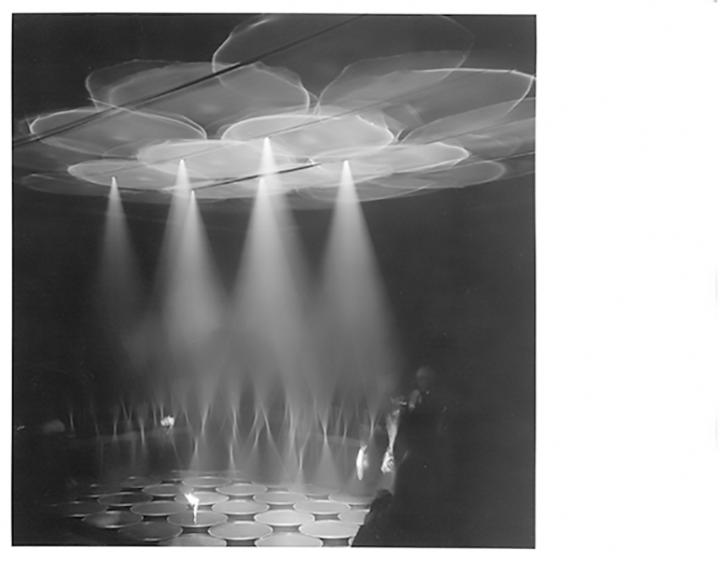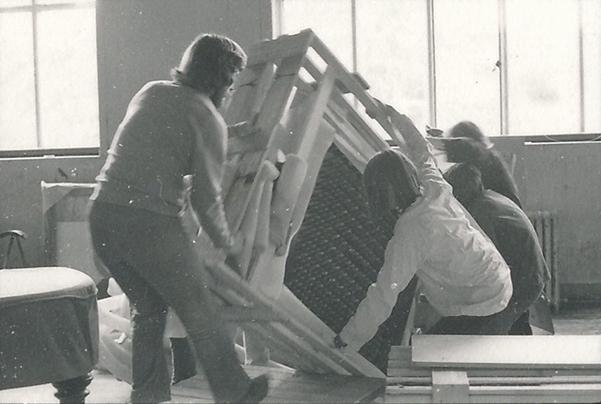22. Adolf Luther’s Focusing Room and Karl Gerstner's Times Square
Gerstner and Luther transformed an ECA studio through compelling Kinetic and Light Art. Luther’s Focusing Room quite literally played with ‘smoke and mirrors’.

Adolf Luther (1912-1990) was a pioneer of post-war ‘Light Art’, a leading representative of kinetic and optical sculpture whose work can be found in numerous museums and public collections.
In many ways, Luther can be seen as a pathfinder for a number of contemporary artists, including the Danish-Icelandic artist Olafur Eliasson.
Some of Luther’s best work utilises concave mirrors, often spot lit from above.
[after ZERO…] other artists realised the principle of making light visible. Luther did this literally by means of concave focussing mirrors which reflect light-rays in a dark room.

Focusing Rooms
His Focusing Room (1968) was first exhibited at Utrecht University (now in the collection of the Museum of Modern Art in Goslar, Germany) and cigarette smoke was used to accentuate cones of light, dissociating the shafts from the concave mirrors beneath, creating an ethereal sculpture.
He created another Focusing Room for SGA.
The initial idea was that viewers who smoked would effectively contribute to and become part of the installation, although later on, fog machines would be used to achieve this effect.
The work of the Swiss artist Karl Gerstner (1930-2017) was also exhibited in ECA studio E.10 for SGA.
Gerstner's Times Square
Gerstner trained as a graphic designer and designed new typefaces and published books on Concrete and Constructivist art, typography, and colour theory.
In 1958 he formed the Gerstner+Kutter advertising agency in Basel, and in 1968, he moved to a new main office in Düsseldorf to manage the huge Ford account in Germany. As an artist he was interested in the idea of ‘non-ego’ based forms of expression.

Times Square (1965) was a flashing constellation of coloured lights with different patterns, which depended on punched card strips placed in a box by spectators, a work which rhythmised the form of the construction.
In many ways, Gerstner can be seen as emerging from a Constructivist and Bauhaus design and kinetic art tradition, inheriting the legacy of artists such as Josef Albers and László Moholy-Nagy.
C.W.


